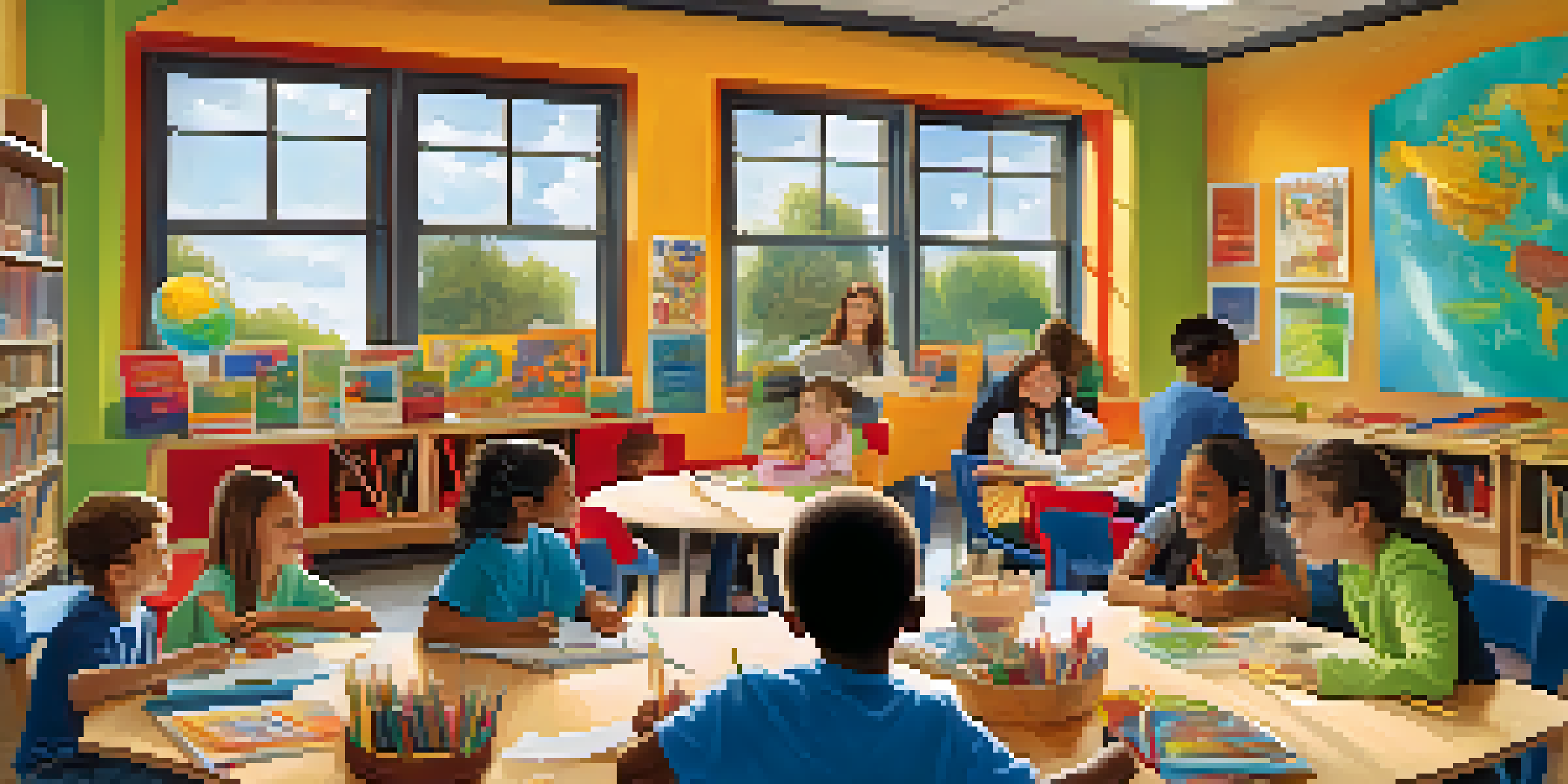San Antonio's Primary Education: Schools Shaping Young Minds

Overview of San Antonio's Primary Education Landscape
San Antonio boasts a diverse primary education system that caters to a variety of learning styles and backgrounds. From public schools to charter and private institutions, families have numerous options to consider. Each school plays a vital role in shaping the foundation for students' future academic and personal success.
Education is the most powerful weapon which you can use to change the world.
The city's commitment to education is evident in its investment in resources and programs designed to enhance learning. Schools often integrate technology into classrooms, providing students with essential skills for the modern world. This investment helps ensure that children are not just learning but also engaging in dynamic educational experiences.
Moreover, community involvement in San Antonio's primary education is significant. Local organizations and parents frequently collaborate with schools to create a supportive environment that fosters growth. This collaborative spirit is crucial in nurturing young minds and preparing them for the challenges ahead.
The Role of Public Schools in San Antonio
Public schools in San Antonio serve as the backbone of the primary education system, providing education to the majority of students in the area. These schools are mandated to follow specific curriculum standards set by the state, ensuring a consistent educational experience. They also offer a range of extracurricular activities that promote personal development outside of academics.

One of the standout features of San Antonio's public schools is their commitment to inclusivity. Many schools implement programs designed to support students with special needs, ensuring that all children have access to quality education. This inclusive approach not only benefits those with special needs but enriches the educational experience for all students.
Diverse Education Options Available
San Antonio offers a variety of primary education choices, including public, charter, and private schools, catering to different learning styles and family needs.
Additionally, community resources often enhance the public school experience. Partnerships with local businesses and organizations create opportunities for mentorship, internships, and hands-on learning. These connections help students relate their education to real-world scenarios, making learning more meaningful.
Charter Schools: Innovative Approaches to Learning
Charter schools in San Antonio have gained popularity for their innovative approaches to education. These schools operate independently from traditional school districts, allowing them greater flexibility in curriculum design and teaching methods. This autonomy enables them to tailor their programs to meet the unique needs of their student populations.
The goal of education is the advancement of knowledge and the dissemination of truth.
Many charter schools focus on specific themes or areas of study, such as STEM (science, technology, engineering, and mathematics) or the arts. This specialization can attract families looking for an education that aligns with their children's interests and talents. For example, a school with a strong emphasis on the arts might offer extensive music and visual arts programs, fostering creativity.
Furthermore, charter schools often emphasize parental involvement and community engagement. They encourage parents to take an active role in their child's education, fostering a sense of partnership between home and school. This collaborative environment can lead to enhanced student performance and a stronger school community.
Private Schools: Tailored Education Experiences
Private schools in San Antonio offer an alternative to public and charter schools, often providing smaller class sizes and specialized programs. These institutions can tailor their curriculum to meet specific educational philosophies or religious beliefs, offering families a more personalized approach to education. This can be particularly appealing for parents seeking a specific educational environment for their children.
Many private schools emphasize a holistic approach to education, focusing not just on academics but also on character development and social skills. This comprehensive education model helps students grow into well-rounded individuals prepared for future challenges. For instance, schools might incorporate community service projects, teaching children the value of giving back.
Community Support Enhances Learning
Active parental and community involvement plays a crucial role in supporting San Antonio's primary education, fostering a collaborative environment that benefits students.
Additionally, private schools often have the resources to implement unique programs and extracurricular activities. Whether it's advanced science labs or competitive sports teams, these opportunities can enhance students' educational experiences. The result is an environment that nurtures both intellectual and personal growth.
The Importance of Community and Parental Involvement
Community and parental involvement are crucial components of successful primary education in San Antonio. Active participation from parents can significantly enhance student achievement, as it creates a supportive network around children. Parents who engage with their child's education often foster a love for learning that can last a lifetime.
Schools frequently encourage parental involvement through volunteer opportunities, events, and regular communication. This partnership creates a sense of belonging and investment in the school community. For instance, parents volunteering in classrooms can provide additional support and resources, enriching the learning environment.
Moreover, local organizations play a significant role in supporting schools. Partnerships with businesses and non-profits can lead to tutoring programs, scholarships, and after-school activities. These collaborations not only benefit students but also strengthen community ties, making education a shared priority.
Challenges Facing Primary Education in San Antonio
Despite its strengths, primary education in San Antonio faces several challenges. One of the most pressing issues is the disparity in funding between different schools and districts. Schools in economically disadvantaged areas often struggle to provide the same level of resources and support as their more affluent counterparts, leading to inequalities in educational opportunities.
Another challenge is the need for effective teacher recruitment and retention. High turnover rates can disrupt the learning environment and hinder student progress. Schools must work to create supportive and rewarding environments for educators to ensure that they remain in the profession and continue to inspire their students.
Challenges in Funding and Inclusion
Despite its strengths, San Antonio's primary education system faces challenges such as funding disparities and the need for effective teacher retention and inclusive practices.
Lastly, addressing the diverse needs of students is an ongoing challenge. With a rich tapestry of cultures and backgrounds, San Antonio's schools must find ways to cater to a wide range of learning styles and needs. This requires ongoing training for educators and a commitment to inclusive practices that ensure every student has the opportunity to succeed.
Future Trends in San Antonio's Primary Education
As we look to the future, several trends are emerging in San Antonio's primary education landscape. One significant trend is the increasing integration of technology in the classroom. Schools are adopting digital resources and tools to enhance learning, prepare students for tech-driven careers, and facilitate remote learning options.
Another trend is the growing emphasis on social-emotional learning (SEL). Educators recognize the importance of supporting students' mental well-being alongside academic achievement. Programs that focus on building resilience, empathy, and interpersonal skills are becoming more prevalent, helping students navigate both school and life.

Additionally, collaboration between schools and community organizations is likely to expand. By working together, educators and local leaders can create more comprehensive support systems for students and families. This trend toward collaboration promises to strengthen the educational landscape, ensuring that every child has the resources they need to thrive.